Ecotourism stands as a powerful catalyst for sustainable development, transforming local economies while safeguarding natural treasures. From the pristine wilderness of Costa Rica to the remote villages of Nepal, this conscientious approach to travel generates over $100 billion annually worldwide, creating a virtuous cycle of conservation and community growth. By channeling tourism revenue directly into local communities and conservation efforts, ecotourism sparks infrastructure development, creates meaningful employment opportunities, and funds environmental protection initiatives that might otherwise go unsupported.
In Ontario’s protected areas alone, nature-based tourism contributes significantly to regional development, with visitors spending over $2.3 billion annually while exploring the province’s ecological wonders. This investment flows into improved trail systems, sustainable accommodations, and educational programs that benefit both tourists and local residents. Beyond immediate economic gains, ecotourism fosters cultural preservation, environmental awareness, and technological advancement in remote areas, demonstrating how responsible travel can serve as a bridge between conservation goals and development needs.
As global interest in sustainable travel continues to surge, ecotourism emerges as a vital tool for balanced development, proving that economic growth and environmental stewardship can work hand in hand to create lasting positive change.
Economic Benefits of Protected Area Tourism

Direct Revenue Streams
Ecotourism generates significant direct revenue through various channels, creating a sustainable economic foundation for local communities and conservation efforts. Park entrance fees serve as a primary income source, with Ontario’s protected areas collecting fees that directly support trail maintenance, wildlife protection, and facility upgrades. For instance, popular destinations like Algonquin Provincial Park generate millions in annual entrance fees, demonstrating how sustainable outdoor activities can create meaningful revenue streams.
Guided tours represent another substantial income source, with local experts offering specialized experiences from wildlife watching to interpretive hiking. These services not only provide employment for community members but also ensure visitors gain deeper appreciation for local ecosystems. In Ontario’s Bruce Peninsula, guided tours during peak season can generate thousands in daily revenue while promoting responsible tourism practices.
Accommodation revenue completes the trifecta of direct income sources. From eco-lodges to campgrounds, overnight stays contribute significantly to local economies. Take the Killarney Lodge in Algonquin Park, where comfortable rustic accommodations attract visitors year-round, providing steady employment and generating substantial revenue that supports both park operations and local communities. This combination of fees, guided experiences, and accommodation creates a robust economic framework that supports both conservation efforts and community development.
Community Economic Growth
Ecotourism has become a powerful engine for local economic growth across Ontario’s communities. When visitors come to experience our province’s natural wonders, they create ripple effects that benefit entire regions. Local businesses, from family-owned bed & breakfasts to guided tour operations, see direct revenue increases from eco-conscious travelers seeking authentic experiences.
Take the flourishing Bruce Peninsula region, where sustainable tourism has transformed small towns into year-round destinations. Local residents have opened kayak rental shops, eco-lodges, and organic cafes to serve nature enthusiasts, creating lasting employment opportunities. Similarly, Indigenous tourism experiences have opened new economic pathways for First Nations communities while sharing cultural heritage with respectful visitors.
The impact extends beyond tourism-specific businesses. Local artisans sell their crafts to visitors, farmers supply fresh produce to restaurants, and construction companies help build sustainable infrastructure. Many communities have seen young people return home to start eco-friendly businesses, reversing rural population decline.
What’s particularly exciting is how ecotourism encourages year-round economic activity. While summer remains peak season, activities like winter wildlife viewing, snowshoeing, and photography workshops help maintain steady income streams throughout the year. This sustainable approach to tourism ensures long-term economic benefits while preserving the natural resources that make these destinations special.
Infrastructure Development Through Ecotourism
Sustainable Facilities
Ontario’s commitment to sustainable tourism shines through its thoughtfully designed eco-friendly facilities. These structures seamlessly blend with their natural surroundings while incorporating cutting-edge green infrastructure initiatives that minimize environmental impact.
Take the visitor center at Algonquin Provincial Park, for instance. Built using locally sourced timber and powered by solar panels, it serves as both an educational hub and a model of sustainable architecture. The building’s large windows maximize natural lighting while providing stunning views of the surrounding wilderness, creating an immersive experience for visitors.
Throughout Ontario’s ecotourism destinations, you’ll find elevated boardwalks and carefully maintained trails that protect sensitive ecosystems while ensuring accessibility for all visitors. These pathways are designed to prevent soil erosion and protect native vegetation, often incorporating recycled materials in their construction.
Many facilities now feature rainwater harvesting systems, composting toilets, and energy-efficient lighting. Eco-lodges and camping facilities are strategically placed to minimize wildlife disruption while offering comfortable stays that don’t compromise on environmental responsibility. Some locations even incorporate living roofs that provide natural insulation and create additional habitat for local flora and fauna.
What’s particularly impressive is how these sustainable facilities serve as educational tools themselves, with interpretive signs explaining their eco-friendly features and inspiring visitors to adopt similar practices in their daily lives.
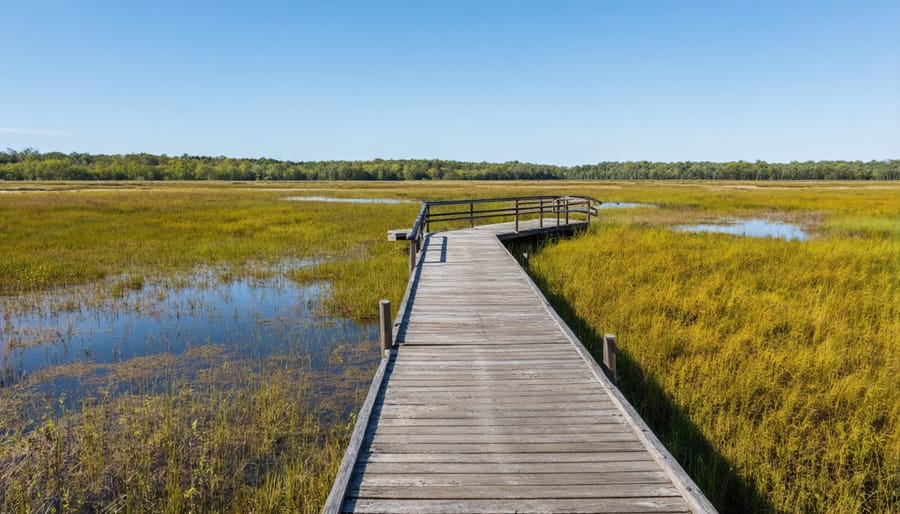
Transportation Networks
One of the most significant ways ecotourism drives development is through the expansion and improvement of transportation networks. As more nature enthusiasts seek out Ontario’s pristine wilderness areas, there’s a growing need for better access routes and public transit options. Many previously remote locations now feature well-maintained roads, making them accessible to both adventure seekers and local communities alike.
Take the popular Algonquin Provincial Park, for instance. The development of Highway 60 corridor not only serves thousands of visitors annually but has also connected several small communities, boosting local economies and creating year-round accessibility. Similarly, shuttle services have sprung up around popular hiking trails and camping spots, reducing individual vehicle traffic and supporting sustainable transport options.
What’s particularly exciting is how these transportation developments are being planned with environmental consciousness in mind. New access roads often incorporate wildlife corridors and crossings, while many regions are introducing electric shuttle buses and bike-sharing programs. The Bruce Peninsula, for example, has implemented a successful park-and-ride system during peak seasons, helping manage visitor numbers while ensuring everyone can enjoy the natural attractions.
These transportation improvements benefit more than just tourists – they provide local residents with better connectivity to essential services, job opportunities, and neighboring communities. It’s a perfect example of how ecotourism can catalyze infrastructure development while maintaining environmental responsibility.
Conservation and Development Balance
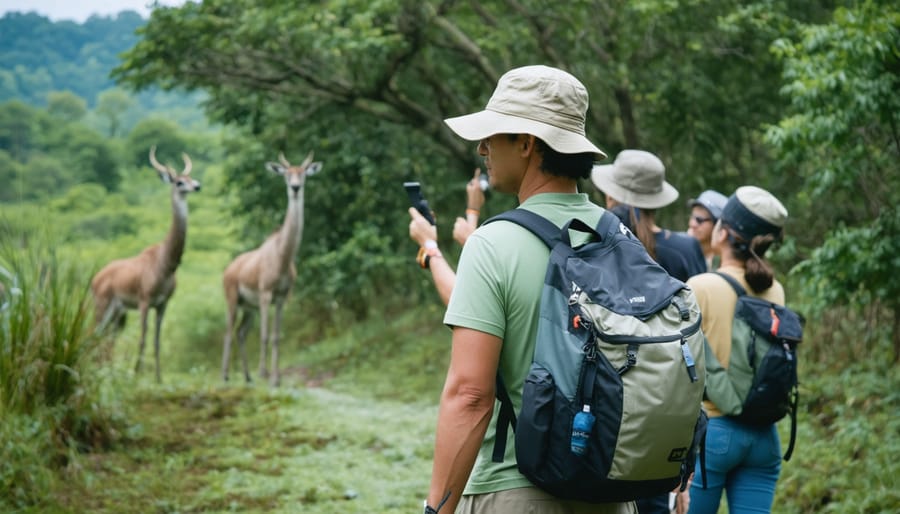
Sustainable Practices
Ontario’s ecotourism sector showcases several groundbreaking sustainable development initiatives that perfectly balance environmental protection with economic growth. Take the Bruce Peninsula Biosphere Reserve, where local businesses have partnered with Indigenous communities to create low-impact hiking trails and educational programs that protect sensitive ecosystems while providing meaningful employment opportunities.
In Algonquin Provincial Park, innovative waste management systems and solar-powered visitor centers demonstrate how infrastructure can be developed sustainably. These improvements have reduced the park’s carbon footprint while enhancing visitor experiences, serving as a model for other protected areas across the province.
The success of these initiatives has inspired broader wildlife conservation efforts throughout Ontario. For instance, the Thousand Islands region has implemented a certified eco-lodge program, where accommodations must meet strict environmental standards while supporting local communities through job creation and sustainable resource management.
Local tour operators have also embraced sustainable practices by introducing electric boat tours, implementing “leave no trace” policies, and partnering with environmental researchers to monitor ecosystem health. These initiatives not only protect natural resources but also create unique experiences that attract environmentally conscious travelers, proving that conservation and economic development can work hand in hand.
Future Growth Opportunities
Ontario’s ecotourism sector shows promising potential for future growth while maintaining its commitment to environmental stewardship. One exciting opportunity lies in developing specialized guided experiences that connect visitors with Indigenous communities, offering authentic cultural exchanges and traditional ecological knowledge sharing.
Technology integration presents another frontier, with possibilities for virtual reality nature tours, interactive wildlife tracking apps, and educational platforms that enhance visitor experiences without increasing physical impact on sensitive areas. These digital tools can help manage visitor flow and provide enriching experiences during off-peak seasons.
Sustainable accommodation is ripe for innovation, with growing interest in eco-lodges, treehouse stays, and off-grid glamping experiences. These ventures can showcase green building practices while offering unique stays that minimize environmental impact.
Adventure tourism also presents untapped potential, particularly in developing low-impact activities like canopy walks, wildlife photography tours, and sustainable foraging experiences. These activities can create new revenue streams while fostering environmental awareness.
Looking ahead, certification programs for eco-friendly operators could help standardize best practices and provide quality assurance for conscientious travelers. Additionally, partnerships between conservation organizations and tourism operators could create new opportunities for citizen science initiatives and hands-on conservation experiences.
The key to future growth lies in balancing increased visitor access with ecological preservation, ensuring that development enhances rather than compromises the natural assets that make Ontario’s wilderness so special.
As we’ve explored throughout this article, ecotourism has become a powerful catalyst for sustainable development in Ontario and beyond. The impact is clear: local communities are thriving through new job opportunities, infrastructure is improving while maintaining ecological integrity, and visitors are gaining deeper appreciation for our natural heritage.
What’s particularly exciting is how ecotourism creates a positive feedback loop. When tourists experience our stunning landscapes responsibly, they become advocates for conservation. This awareness leads to increased support for environmental protection, which in turn attracts more conscious travelers – it’s a win-win situation for both nature and communities.
Looking ahead, the future of ecotourism in Ontario appears bright. We’re seeing more innovative eco-lodges, sustainable transportation options, and community-led initiatives popping up across the province. Local businesses are increasingly adopting green practices, not just because it’s good for the planet, but because it’s what today’s travelers want.
Remember, every eco-conscious trip you take contributes to this positive change. Whether you’re hiking in Algonquin Park, bird watching in Point Pelee, or staying at an eco-lodge in the Bruce Peninsula, you’re helping support local economies while protecting our natural treasures for future generations.
The key to successful development through ecotourism lies in maintaining that delicate balance between growth and conservation. As more regions embrace this approach, we’re creating a model for sustainable tourism that benefits everyone – visitors, locals, and most importantly, our precious natural environment.

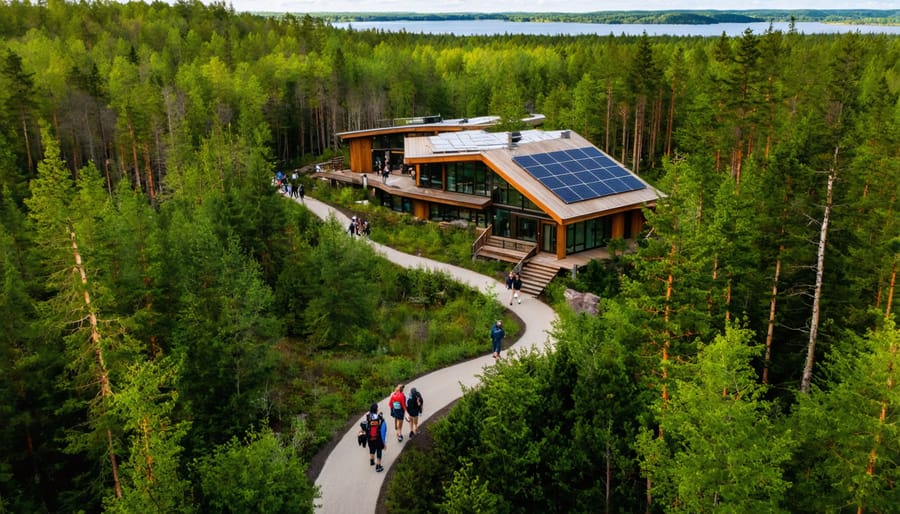
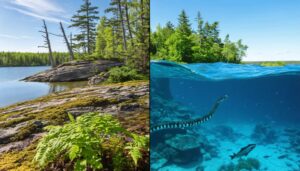



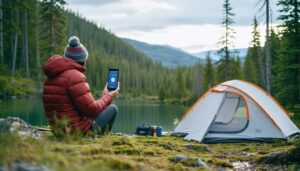


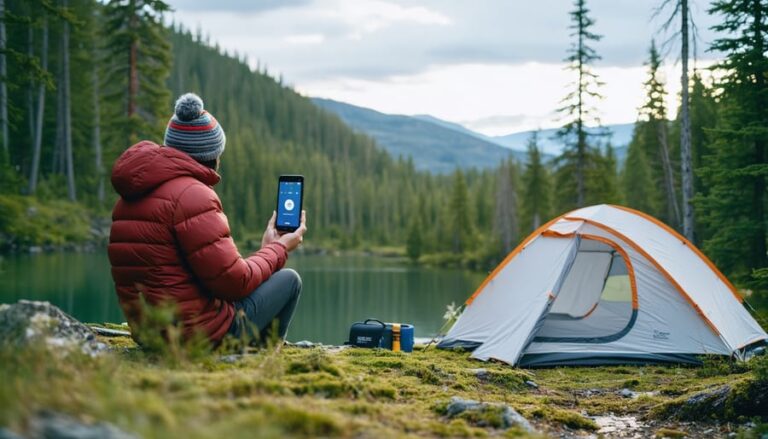




+ There are no comments
Add yours